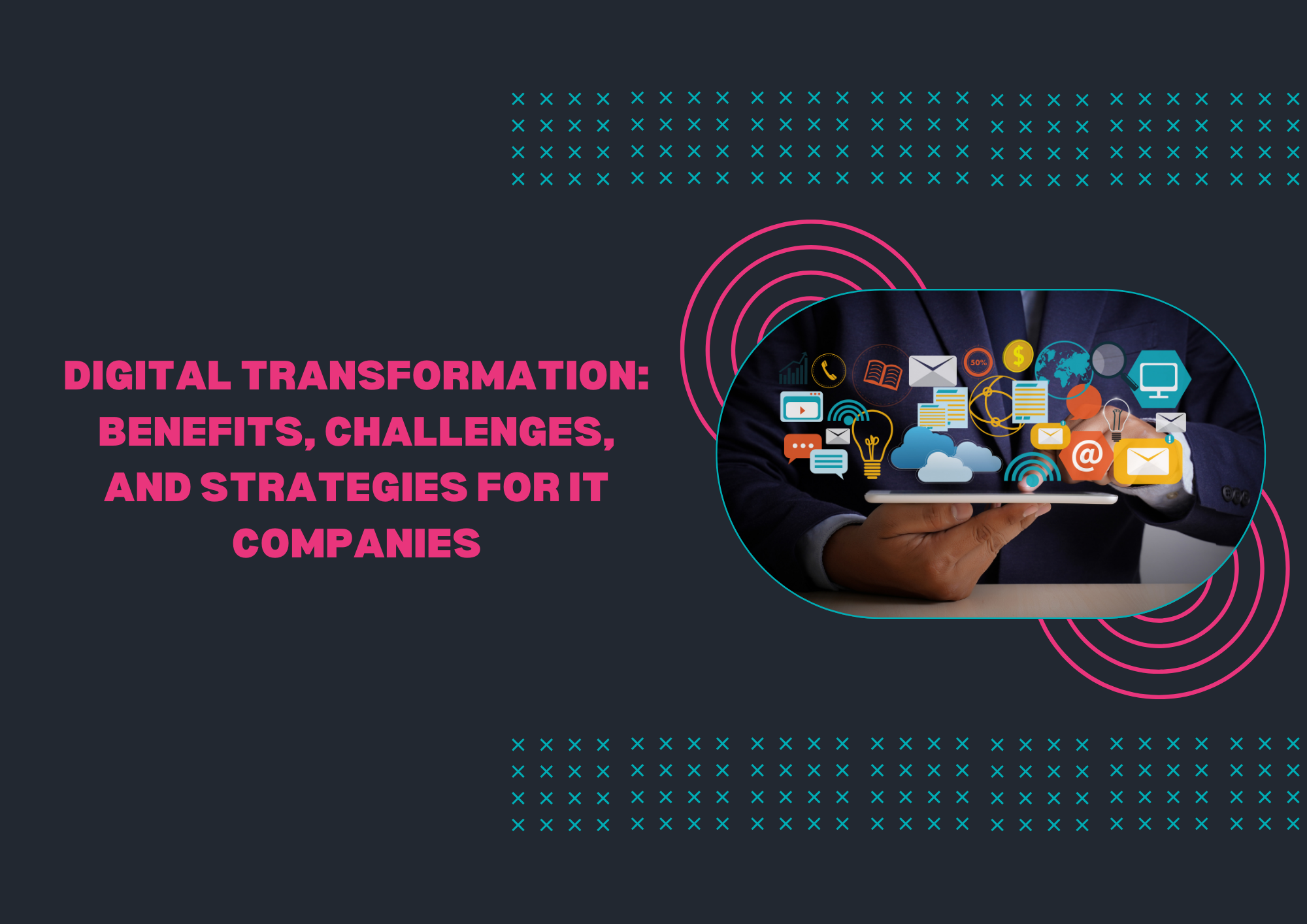
Digital Transformation: Benefits, Challenges, and Strategies for It Companies
Digital Transformation: Benefits, Challenges, and Strategies for It Companies
Implementing a digital strategy can offer many benefits, such as improving efficiency, innovation, customer satisfaction, and competitive advantage.
Digital transformation generates faster, simpler and more efficient processes and workflows. Creating automated digital workflows, designed to manage information, gives employees time to focus on business value-added activities and develop assigned projects and tasks faster.
Digital transformation is the process of using digital technologies to create new — or modify existing — business processes, culture, and customer experiences to meet changing business and market requirements. This reimagining of business in the digital age is digital transformation.
Digital transformation is becoming imperative for businesses in today's fast-paced and technologically-driven world. It presents enormous opportunities to reimagine the way you run your business. The digitization of business operations gives rise to an abundance of benefits, such as enhanced customer experiences, increased competitiveness, improved productivity, and streamlined workflows. However, embracing IT transformation also comes with its fair share of challenges, from changing organizational culture to managing data security and privacy concerns. Whether you're a well-established IT firm or a start-up looking to make a mark, understanding digital transformation is crucial.
A digital strategy is a plan that outlines how a business or organization will use digital technologies, channels, and data to achieve its goals and create value for its customers and stakeholders. Implementing a digital strategy can offer many benefits, such as improving efficiency, innovation, customer satisfaction, and competitive advantage. However, it also poses some challenges, such as managing change, aligning resources, ensuring security, and measuring impact. In this article, we will explore some of the key benefits and challenges of implementing a digital strategy and how to overcome them.
Benefits of Digital Transformation for IT Companies:
- Enhanced Efficiency: Streamlining internal processes and automating tasks result in improved operational efficiency, allowing IT companies to deliver services faster and with higher quality.
- Innovative Solutions: Leveraging emerging technologies like AI, machine learning, and blockchain enables IT companies to create innovative products and services, gaining a competitive edge.
- Data-Driven Insights: Digital transformation empowers IT companies to gather and analyze data, providing actionable insights that inform strategic decisions and enhance performance.
- Global Reach: The ability to scale operations globally is simplified through cloud computing and digital technologies, opening up new markets and opportunities.
- Customer-Centric Approach: Digital tools, such as chatbots and personalized portals, enable IT companies to offer superior customer experiences, building trust and loyalty.
Challenges of Digital Transformation for IT Companies:
- Cultural Resistance: Internal resistance to change can hinder progress. Overcoming this requires fostering a culture of adaptability and continuous learning.
- Cybersecurity Risks: Expanding the digital footprint exposes IT companies to cybersecurity threats. Robust security measures and employee training are crucial.
- Legacy Systems: Outdated legacy systems may not easily integrate with new technologies, necessitating complex and costly upgrades.
- Talent Shortage: The demand for skilled professionals in emerging tech fields often outpaces supply, making talent acquisition and retention challenging.
- Data Privacy and Compliance: Strict data protection regulations require careful handling of customer data and compliance with evolving privacy laws.
Strategies for Digital Transformation Success:
- Leadership Buy-In: Ensure top-level commitment to digital transformation initiatives to drive them effectively throughout the organization.
- Clear Strategy: Develop a well-defined digital transformation strategy with specific goals, timelines, and measurable outcomes.
- Empower Employees: Invest in employee training and foster a culture of innovation and adaptation to embrace change.
- Agile Implementation: Adopt an agile approach, implementing changes incrementally to adapt to evolving business needs.
- Data-Driven Decision-Making: Harness data analytics to gain insights into customer behavior and operational efficiency.
- Cloud Adoption: Embrace cloud computing for scalability, flexibility, and cost-effectiveness.
- Cybersecurity Focus: Prioritize robust cybersecurity measures, including regular audits and threat detection systems.
- Customer-Centricity: Enhance customer experiences by using digital tools and personalized services.
- Strategic Partnerships: Collaborate with tech partners and build ecosystems to access expertise and resources in emerging technologies.
- Continuous Evaluation: Regularly assess progress and adjust strategies to stay competitive and agile in a rapidly evolving digital landscape.

Share This News